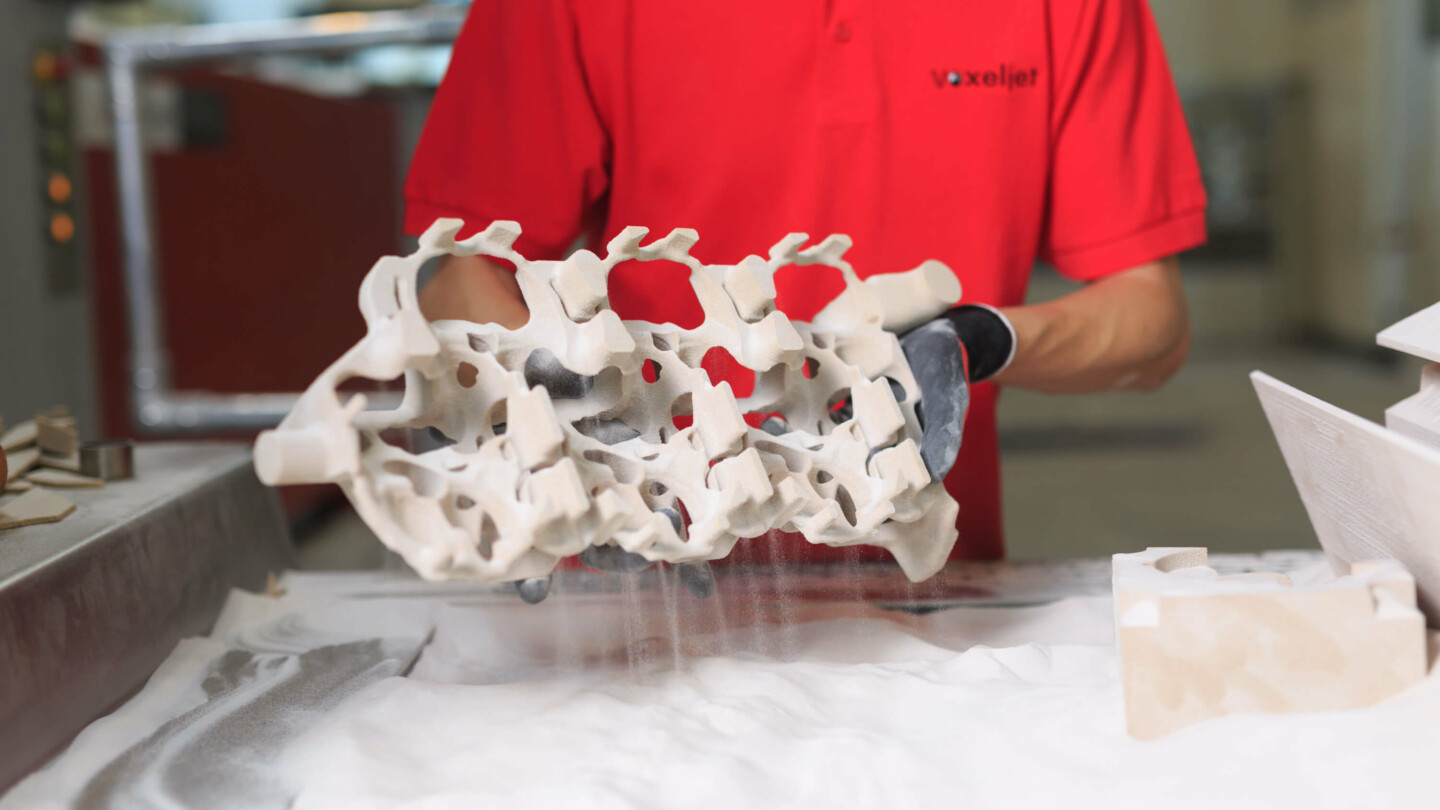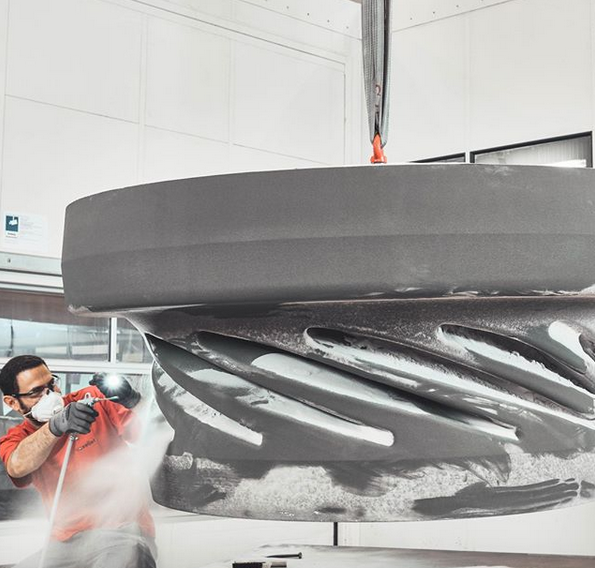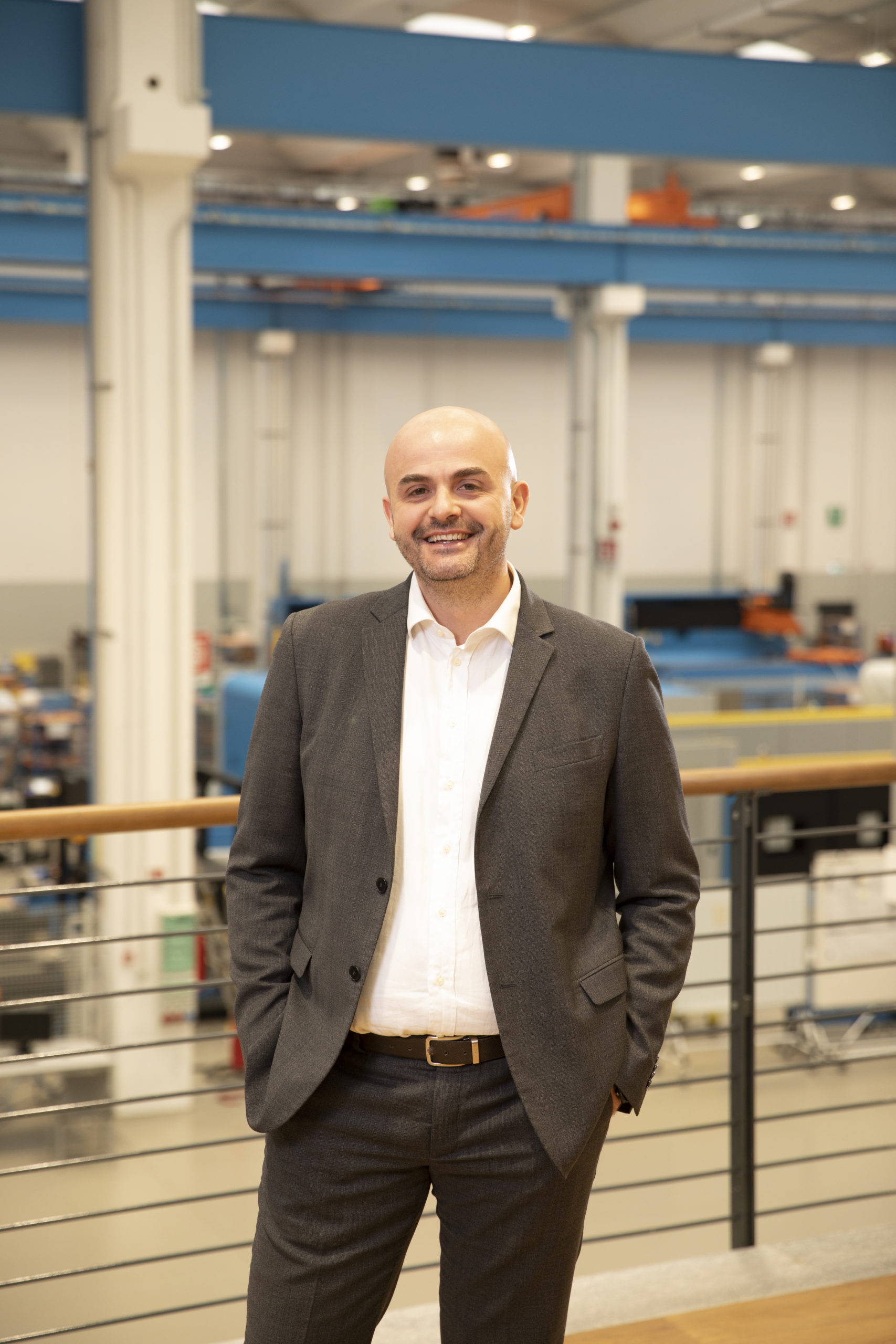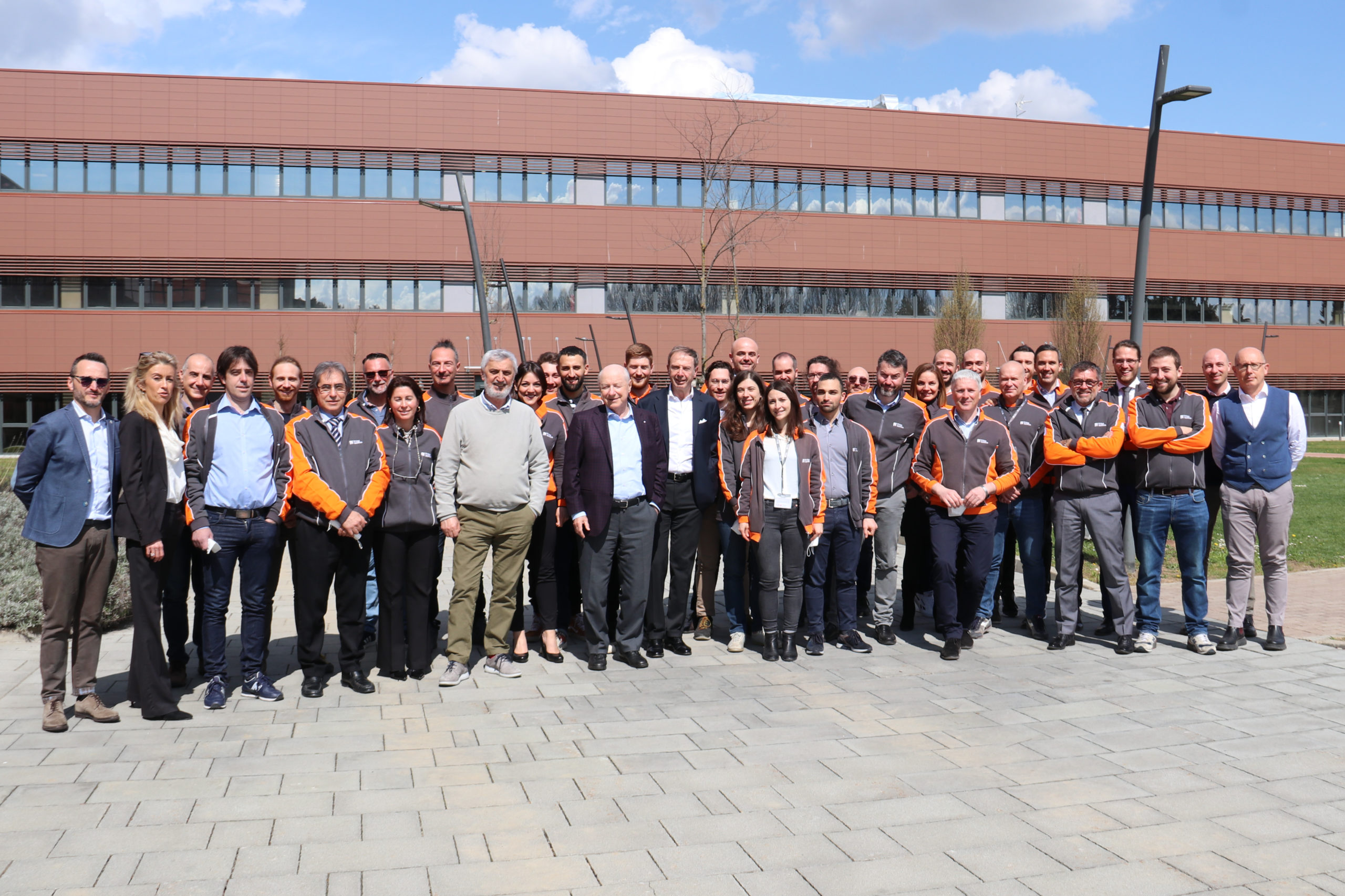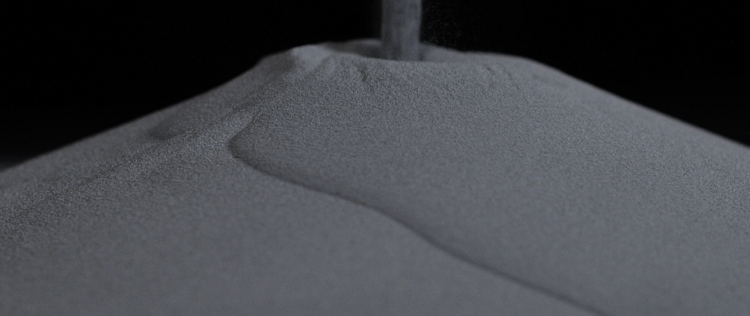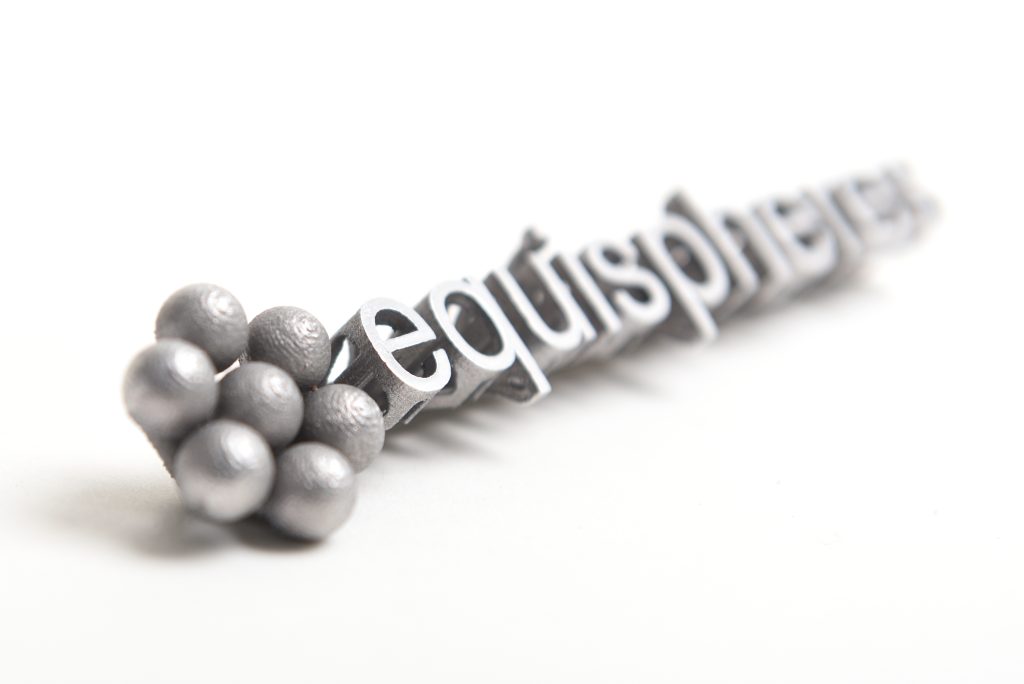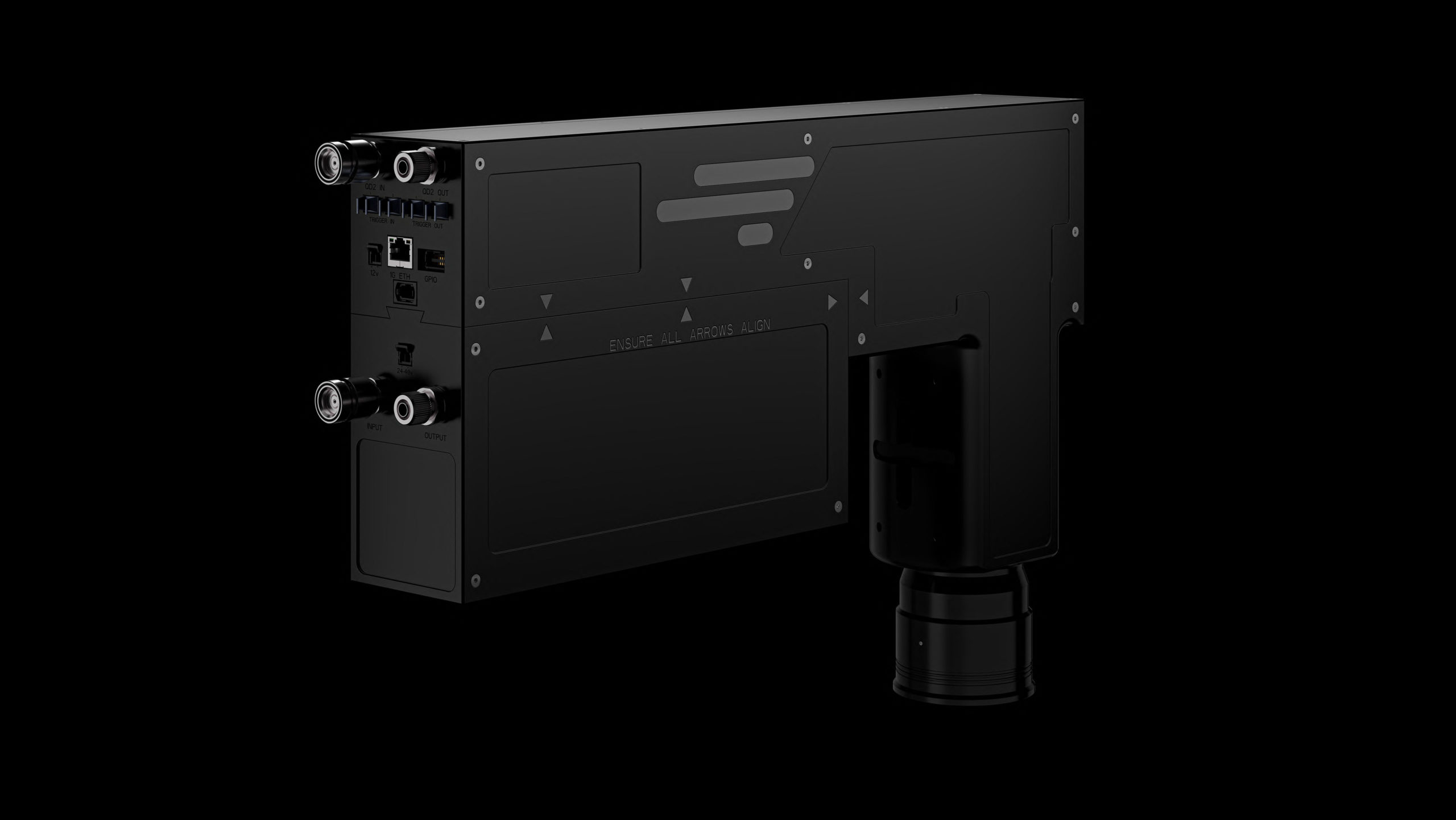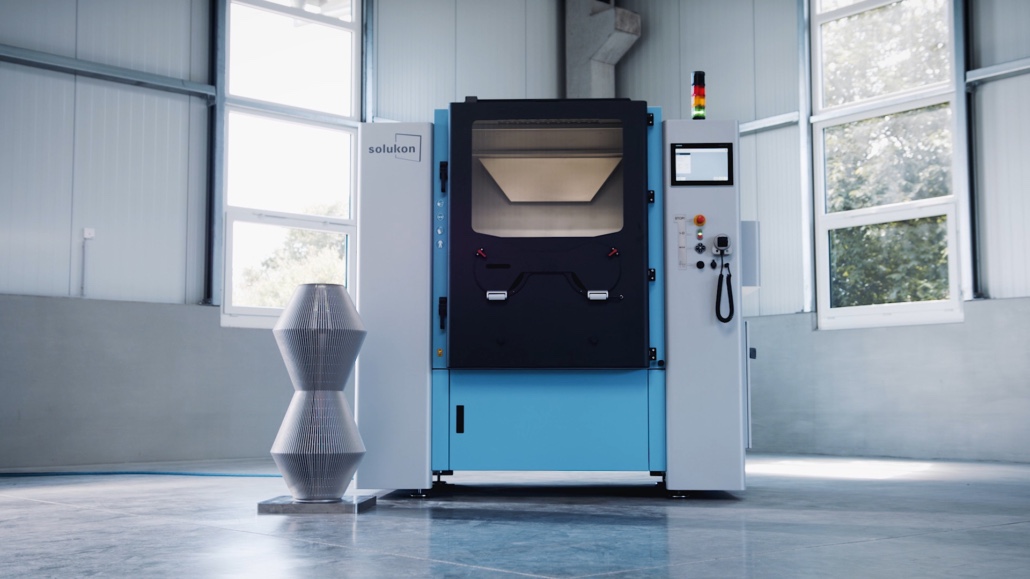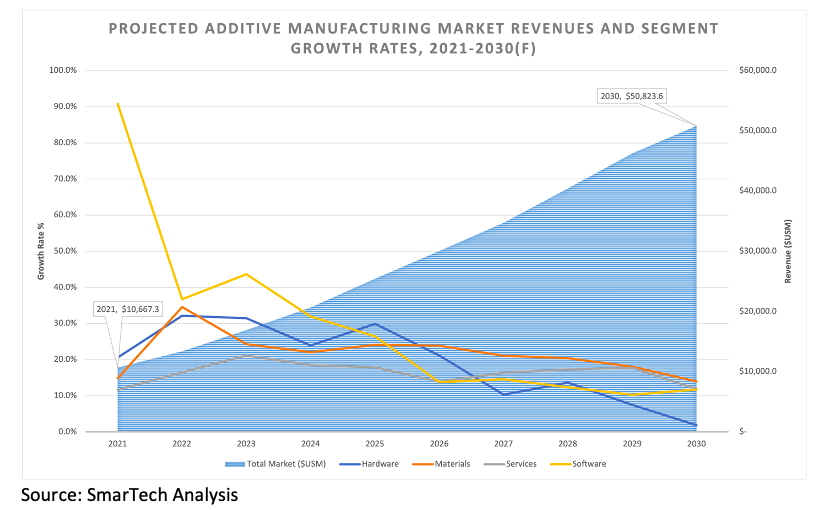3DPrint.com | The Voice of 3D Printing / Additive Manufacturing |
- 3D Printing Financials: Voxeljet Revenue Up 122% Since Last Earnings Report
- Prima Industrie Spins Off 3D Printing Company Prima Additive
- Mitsubishi Gas Giant to Distribute Metal 3D Printing Powders from Equispheres
- DLP 3D Printing Gets Major Upgrade with Native 4K Capabilities from IN-VISION
- Career Ladders & Compensation Packages – What the Talent Really Wants in 2022
- Rocket 3D Printing Startup Launcher Acquires Solukon System for Post-Processing
- 7 3D Printing Projects Funded by ASTM to Drive AM Standards
- EWI to Install Calibur3 Electron Beam Metal 3D Printing Technology
- Markforged Makes First Acquisition With Teton Simulation
- 3D Printing Industry Worth $10.6B, Says Annual SmarTech Analysis Data
| 3D Printing Financials: Voxeljet Revenue Up 122% Since Last Earnings Report Posted: 06 Apr 2022 06:30 AM PDT Industrial 3D printer manufacturer voxeljet (NASDAQ: VJET) reported solid fourth-quarter and 2021 full-year earnings on March 31, 2022, and solid preliminary results for the first quarter of 2022. Another win for the company this time around was its net profit which surfaced at €1 million or 15 cents per share, compared to the net losses of €3.7 million, or 77 cents per share, incurred in the same period in 2020. As one of the pioneering 3D printing manufacturers, voxeljet is pushing new boundaries with its binder-jetting technology, especially for high volume manufacturing. For Q4 2021 and full year 2021, voxeljet reported an increase of 22.9% and 15.1%, respectively. In the last quarter of last year, the company posted a rise in both its systems and services revenues compared to 2020. This was mainly from the sale of seven new and two used and refurbished 3D printers, compared to six new and two used and refurbished 3D printers delivered in last year's fourth quarter. Notably, the company sold many larger-scale printers, which generated higher revenues and higher gross margins. Systems-related revenues also increased in the fourth quarter year over year, which confirmed a positive trend as the industry recovers from the Covid-19-related economic slow-down. Representing 77.8 percent of total revenues in the fourth quarter of 2021, Systems revenue comes from manufacturing and selling industrial-grade, high-speed, large-format 3D printing systems geared toward mass production of complex models, molds, and direct parts. As for the brand's Services segment, which focuses on the printing of on-demand parts for its customers, saw a boost of 11.6% to €2.4 million in the fourth quarter of 2021 compared to the same period in 2020. This increase was mainly due to higher revenue contributions from the German operations as well as from the voxeljet subsidiary in China. Voxeljet CEO Ingo Ederer said on Thursday that the company finished the year with several milestones that will help its mission to establish new manufacturing standards. Starting with one of the biggest news, voxeljet, together with GE Renewables, plans to develop the world's largest binder jet 3D printer to produce critical components for the most powerful offshore wind turbines in the world, called Haliade-X. During an earnings call with investors, Ederer suggested that the new groundbreaking project is a significant step towards renewable energy. The company will provide pictures throughout the year since the team just started ordering parts and assembling the first prototype components. Additionally, in the fourth quarter, voxeljet announced that Brose, a leading global supplier to the electric car industry, is the first client in the beta program for the new, large High-Speed Sintering 3D printer. Another piece of news that adds to the company's expansion is a new partnership with Covestro, a billion-dollar chemical company, to advance additive manufacturing in series production. Also, voxeljet received the final acceptance of the first VJET X units from its partner in the fourth quarter, related to the project with a leading German automotive manufacturer. The VJET X is a new 3D printer with extreme performance for high-volume industrial applications.
voxeljet's 2022 is shaping up to become a strong first quarter, with revenue anticipated in the range of €4 million and €4.5 million. Meanwhile, the guidance for the full year ending on December 31, 2022, could reach between €25 and €30 million. In fact, over the next few years, Ederer described how a growing number of parts currently made out of metal would be manufactured with high-performance plastic polymers. Engineering thermoplastic materials provide consistent strength in business and outstanding impact with performance for metal replacement, he said. All these advantages provide the sales opportunity for 3D printing and the manufacturing of high-performance plastic polymers in what Ederer described as "larger than the opportunity in metal printing." He hopes to capture a significant portion of this growing market with voxeljet's new large high-speed sintering printers. Hoping that it can increase the total addressable market considerably, voxeljet is targeting new applications with existing groups with its VJET X, as well as new markets thanks to its new high-speed sintering printer, such as audio equipment, automotive interiors, and sealings. In addition, the brand is confident that over the long-term, its expertise and intellectual property in binder-jetting for series production will differentiate it from the competition and, in turn, help customers become more productive at scale. The post 3D Printing Financials: Voxeljet Revenue Up 122% Since Last Earnings Report appeared first on 3DPrint.com | The Voice of 3D Printing / Additive Manufacturing. |
| Prima Industrie Spins Off 3D Printing Company Prima Additive Posted: 06 Apr 2022 06:00 AM PDT Italian manufacturer of laser systems Prima Industrie (BIT: PRI) officially spun off its business unit dedicated to additive manufacturing (AM). Newcomer Prima Additive has emerged as its own company following a merger with local startup 3D New Technologies, which develops a family of innovative machines capable of 3D printing medium to large metal parts. Following the merger, the company has been christened Prima Additive as a tribute to its parent firm and the technology it represents. Up until now, Prima Additive was the AM division of the Prima Industrie Group, headquartered in Turin, Italy, and focused on developing Powder Bed Fusion (PBF) and Direct Energy Deposition (DED) machines, as well as other machine tools for 3D printing. As a result, the company is one of the most active and leading firms in Italy's AM ecosystem. During the Formnext 2021 show alone, Prima Additive unveiled three new machines, two PBF and one DED system. Leaning on its parent firm's laser system manufacturing expertise, Prima Additive has created devices with a unique laser source configuration. For example, its Print Genius 150 Double Wavelength platform has a 300 W infrared laser and a 200 W green laser, which can operate alternatively in the same work area. Another solution, the Print Genius 250 solution for high productivity metal printing applications, can reduce production times thanks to its 500 W single-mode dual laser, combined with intelligent software for a quick orientation of the pieces and the definition of the machine parameters. 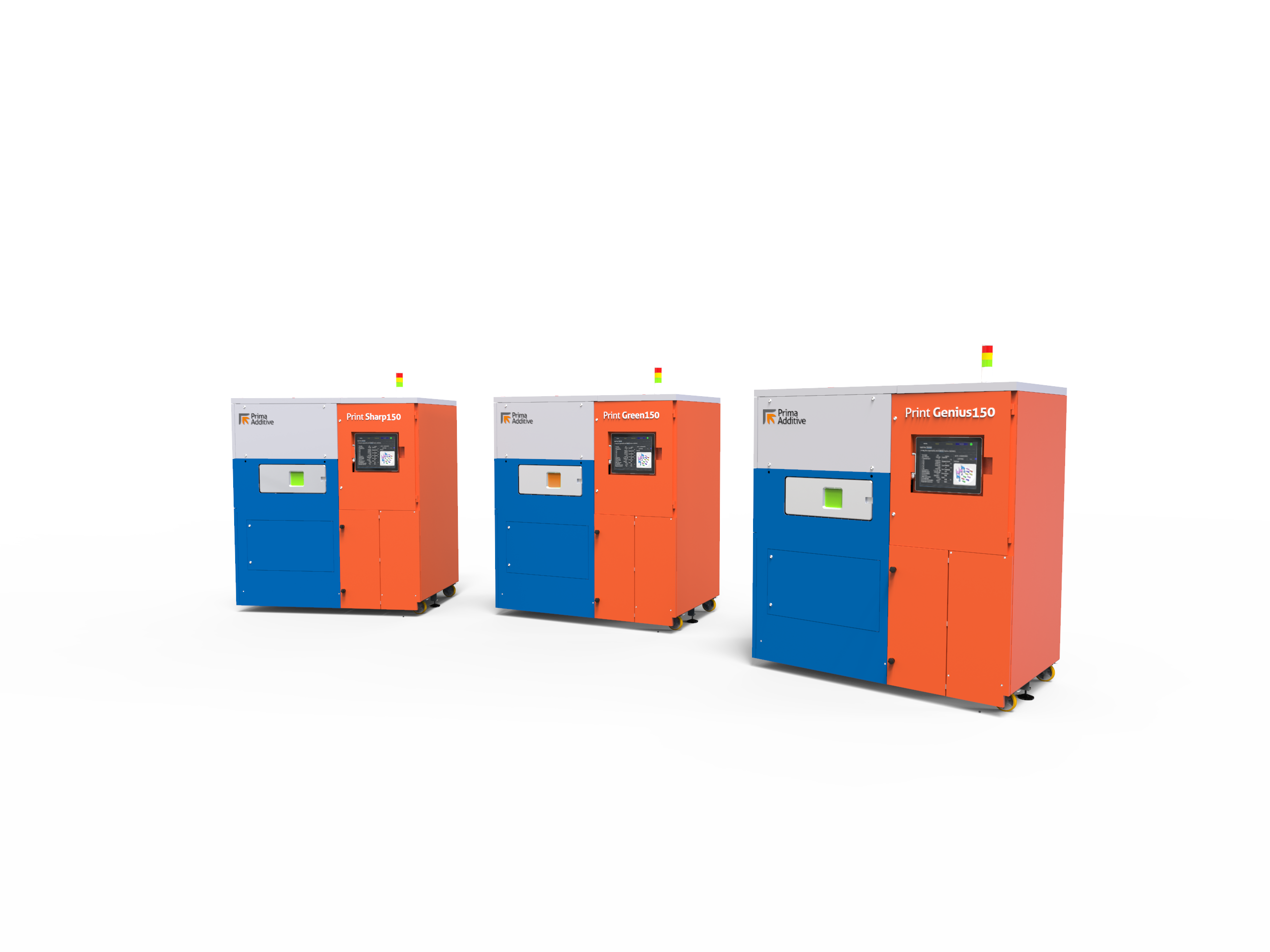 Prima Additive’s Print 150 family with Powder Bed Fusion technology. Image courtesy of Prima Additive. Through this merger, the duo plans to unite their synergies to accelerate the development and commercialization process of AM products and the growth plans of the new company that will operate in a market with excellent development prospects. The transaction is also linked to a larger project that will launch in the coming months when new investors are expected to back this new company to accelerate its business development plans further. A promising market for AMThe two merged companies have a history spanning back to 2017, when Prima Industrie first invested in 3D New Technologies and began collaborating with the group to develop innovative systems based on PBF technology. Even more so, according to the online media site Industria Italiana, in 2020, Prima reaffirmed its investment in the startup and grew its capital share to 20%. This series of steps would lead to the imminent merger. Led by Gianfranco Carbonato, Prima Industrie had already anticipated in October 2021 the deal that would turn the division into a company, a new partnership with 3D New Technologies, and a €7 million revenue goal. At the time, the Prima Additive business unit of Prima Industrie had a turnover of roughly €5 million, which, with the planned merger, is now expected to increase. Prima Additive will maintain close collaborative relationships with Prima Industrie, which will remain the majority shareholder of the new company, with a stake of 50.01 percent. Furthermore, the spinout will be led by Paolo Calefati, who went from the Head of Additive Manufacturing and Innovation at Prima Industrie to CEO of Prima Additive. Following the completion of the transaction, Paolo Calefati said the merger represents growth and investment in the 3D printing sector by Prima Industrie.
Serving a wide range of industries, including electronics, aerospace, energy, oil, and gas, Prima Additive is geared towards comprehensive customer support. It provides a suite of services that can be tailored to the different needs of each company. Aside from its development of proprietary PBF and DED machines, it offers customers advanced training, application-oriented technical consultancy for additive manufacturing, additive product re-design, and process optimization. Aiming to provide a roadmap for AM technology, Prima Additive is an active participant in several research consortia, and innovation projects focused on additive technologies, both in Europe and regionally. Like many other competing businesses, it is focused on driving 3D printing adoption and implementation to create "factories of the future" and partake in a European AM market that represents, in all its many industrial forms, a turnover exceeding €100 billion per year. The post Prima Industrie Spins Off 3D Printing Company Prima Additive appeared first on 3DPrint.com | The Voice of 3D Printing / Additive Manufacturing. |
| Mitsubishi Gas Giant to Distribute Metal 3D Printing Powders from Equispheres Posted: 06 Apr 2022 05:30 AM PDT Since it was founded in 2015, Canadian firm Equispheres has expanded its reach within the additive manufacturing (AM) industry. This has included significant amounts of funding, as well as big name clients, such as Lockheed Martin. Now, the metal powder manufacturer has achieved another crucial partner in Taiyo Nippon Sanso Corporation (abbreviated “TNSC” and traded on the TYO as 4091), a subsidiary of Mitsubishi Chemical. The gas giant will aid Equispheres in distributing its aluminum powders in the Japanese market. Equispheres has developed a patent-pending atomization technology that it claims creates "free-flowing, uniform, monograin, agglomerate-free spherical metal powders." This results in a narrow particle size distribution, good sphericity, flowability, and consistent microstructure. Such characteristics are crucial for the control and performance of metal 3D printing. In turn, it's possible to 3D print aluminum powders at three times the rate as with other materials on the market, according to Equispheres. TNSC is Japan's largest industrial gas producer and one of the five leading industrial gas suppliers globally. These include such gasses as oxygen, nitrogen, and argon. Over the past five years or so, TNSC has slowly been increasing its interest in metal 3D printing, where its gasses could play an important role. In 2017, the Japanese multinational began distributing metal powders from LPW, now owned by Carpenter. Around this time, it also started selling Optomec metal 3D printers. In 2020, this was topped off by the opening of a metal 3D printing R&D lab. TNSC spent a year analyzing Equispheres powder before taking them on as a partner. Now that it has, the company will work together on R&D projects to develop relevant applications.
The various conglomerates under the Mistubishi Group are managed and operate separately. In fact, they compete with one another at times, as is the case with Mitsubishi Electric and Heavy Industries over directed energy deposition. However, they do maintain some shareholder crossover and, altogether, the Group has made serious headway in AM. In addition to the aforementioned, Mitsubishi Chemical has invested significantly in polymer 3D printing, including services and materials production. Via TNSC, then, it has an increased stake in metals, as well. This raises the question of what happened with TNSC's relationship with LPW, since Carpenter also produces AlSi10Mg aluminum. This metal is becoming an increasingly competitive space within AM, with SmarTech Analysis noting that aluminum accounted for nearly 10% of 3D printed metal content in 2018. As automotive AM picks up steam, the industry will account for greater aluminum usage, as showcased by Ford's recent foray into aluminum 3D printing. The post Mitsubishi Gas Giant to Distribute Metal 3D Printing Powders from Equispheres appeared first on 3DPrint.com | The Voice of 3D Printing / Additive Manufacturing. |
| DLP 3D Printing Gets Major Upgrade with Native 4K Capabilities from IN-VISION Posted: 06 Apr 2022 05:00 AM PDT IN-VISION Technologies AG has announced a step change in digital light processing (DLP). The Austrian optics specialist has developed what it is calling "the first" native 4K light engine for industrial applications. Dubbed AVATAR, the ultraviolet (UV) projection system will introduce new size and resolution implications for 3D printing and lithography applications. In 2021, IN-VISION released a 4K UV projector called PHOENIX. Like all other 4K light engines on the market, PHOENIX had a resolution of 2560×1600 pixels. To achieve the effect of 4K, these systems use a specific trick that shifts pixels to increase image resolution. Though the surface quality of DLP prints may be improved, the size of the image size is still limited to 2560×1600 pixels. To overcome this, Texas Instruments (TI) has developed a new chipset with a native resolution of 4096×2176. The chipset will be released mid-2022, with IN-VISION developing AVATAR as TI's Design House partner. The new UV projector makes it possible to expose, at high resolution, a larger area than previously possible. Other features include an easily swappable LED module that doesn't require calibration or setup. Built-in Xilinx Zynq UltraScale software makes it possible to customize the projector for a user's given applications or prepared software. The illumination and DMD units feature separate connectors for water cooling. Additionally, AVATAR is designed for moving exposure, which could be similar to what Prodways uses in its MOVINGLight DLP technology. To achieve this, the system includes optical PCIe-Interface, Optical Trigger IN/OUT and a one gigabyte ethernet connection for high scrolling speeds. These features also mean that it can handle the large amounts of data contained in a 4K image. The small width of the system means that multiple projectors can be stacked. Scrolling and stackability mean that it's possible to design a 3D printer with an even larger print area.
The company aims to begin serial production of AVATAR in 2023. IN-VISION's Lead Customer Program is ending, but interested parties may be able to still work with the company regarding the acquisition of an AVATAR print engine. The post DLP 3D Printing Gets Major Upgrade with Native 4K Capabilities from IN-VISION appeared first on 3DPrint.com | The Voice of 3D Printing / Additive Manufacturing. |
| Career Ladders & Compensation Packages – What the Talent Really Wants in 2022 Posted: 06 Apr 2022 04:30 AM PDT This year promises to be a challenging one for the 3D printing talent market – not because there is a job shortage, or even a talent shortage (more severe than in previous years that is) – but because there has been a shift in the power balance in the hiring market. In a previous article, we discussed the effects of the Great Resignation on the AM hiring landscape, and revealed through our 2022 AM Salary Survey Report that despite the relative lack of growth in the AM talent market between 2020-2021 – of +20,000 professionals in North America and +0 professionals in EMEA – we saw a boom in the % increase in jobs that appeared in the market – namely an incredible +346% increase in available jobs within additive manufacturing, posted on LinkedIn, in North America and a monumental increase in available jobs by +515% in EMEA. At Alexander Daniels Global, we are experiencing the busiest period ever in our history as demand for talent is through the roof, and hiring companies face challenges in bagging their ideal candidates. Arguably, now more than ever, it is essential that hiring companies revamp their hiring strategies to adapt to this change in the market. So, we ask ourselves: what can employers do, and what do they need to know, to attract and retain top additive manufacturing talent in 2022? Supply vs DemandA reported 85% of employer respondents to our 2022 AM Salary Survey (conducted in Q4 of 2021), stated that they would be looking to add between 1-20 professionals to their team in the next 12 months (i.e., throughout 2022). An additional 15% of employer respondents claimed that they would be looking to add a further 21-50 professionals to their team. But with the relative lack of growth in the AM talent market, and 1/3 of AM talent having already changed jobs in 2021 (source: 2022 AM Salary Survey Report from Alexander Daniels Global), employers may find themselves fighting to attract professionals. Furthermore, AM talent may find that they will have multiple offers from hiring companies and will therefore be able to afford to negotiate on those offers, providing a further challenge to employers. The 2022 AM Salary Survey Report revealed what the top in-demand roles would be over the next 12 months, with Sales forecast as the discipline to watch. The report also revealed that demand for Software professionals is on the rise in 2022 and marketing professionals have seen an enormous increase in demand signalling a shift within the industry towards bringing software solution development in-house and finding new and innovative ways to position and market offerings – something that could be expected following the record number of mergers and acquisitions that took place in 2021. This may further imply that for skilled Software, Marketing and Sales professionals, this is the year to consolidate your position within your business as these disciplines are becoming a fast commodity. What The Talent Values MostThe top three motivators for talent in the AM industry have largely stayed the same, between 2020 and 2021. In 2019, 'Career Progression' overtook 'Salary' as the top motivator for AM talent to change jobs. When employees feel that they are not able to progress in their current position within a company, they are more likely to jump ship – after all, with career progression we typically expect to see increases in salary too – resulting in a win-win situation for the active jobseeker. Interestingly enough, beyond 'Career Progression' and 'Salary', there has been a noticeable shift in sentiment towards the importance of 'Work-Life Balance' and 'Work Environment / Culture' as a motivator for changing jobs – namely, we have seen a +32% increase in the importance of 'Work Environment / Culture' and +15% increase in 'Work-Life Balance'. Naturally, this shift comes on the back of the pandemic-era of working from home and signals an evolution in what job seekers are accepting from employers when it comes to their work environment. This is particularly significant for hiring companies looking to grow their teams this year, and equally significant for professionals job seeking this year, considering how changing attitudes in the market could impact what is accepted as an attractive compensation package in 2022. What Makes a Compensation Package Competitive?
AM professionals now feel better able to negotiate compensation packages that include flexible working, and since employers have seen that a flexible working model on a much larger scale can still breed success, they have become more accepting of it as an addition to today's compensation packages. In addition, although salary is not considered a top motivator for AM talent in 2022, it is still considered a high priority, and with perception on salary competitiveness dwindling year-on-year in the market – 8% points down from 2020, and 18% points down from 2019 – salaries are still an area of weakness in the industry. This decrease in the perception of salaries in additive manufacturing as 'competitive' likely comes as the saturation of the tech increases, attracting professionals from vertical markets with more established salary thresholds that may cause the pay disparity across disciplines and seniorities in AM to seem non-competitive. Furthermore, with the reported increase in advertisement of additive jobs (as discussed at the start of this article), there is increased opportunity for AM professionals to compare their own salaries to what is currently being offered elsewhere, likely breeding further discontent among the perception of salaries in AM. An Open Invitation: Join ADG & 3DPrint.com For an Exclusive WebinarAlexander Daniels Global, in collaboration with 3DPrint.com, will be hosting an upcoming webinar on 'What the Talent Really Wants in 2022' featuring data from AD Global's 2022 AM Salary Survey Report and market data from SmarTech to give insight into how market growth will affect the 3D printing jobs market in 2022. Join Michael Molitch-Hou, Loxley Graham and Sophie Pontoppidan on Wednesday May 25, 2022 as they dive into topics covering:
Register to join LIVE! The event will be recorded, and a copy sent to all registrants. We look forward to seeing you for more insights on the AM talent and jobs market with Alexander Daniels Global – your 3D Printing Talent Partner – and 3DPrint.com – the Voice of 3D Printing. The post Career Ladders & Compensation Packages – What the Talent Really Wants in 2022 appeared first on 3DPrint.com | The Voice of 3D Printing / Additive Manufacturing. |
| Rocket 3D Printing Startup Launcher Acquires Solukon System for Post-Processing Posted: 05 Apr 2022 06:30 AM PDT The Southern California-based startup Launcher, which specializes in the production of rockets using additive manufacturing (AM), announced that it recently acquired a Solukon SFM-AT1000-S automatic depowdering system for post-processing. In a press release, Launcher referred to Solukon as "its preferred supplier for powder removal systems.” This indicates not only the significance of the partnership itself, but just how crucial post-processing is to the progress of the AM industry in general. Specifically, what's most critical to metal AM making its next great leap forward is the automation of the post-processing phase.
The most obvious advantage of the SFM-AT1000-S for Launcher's purposes is its capacity for such large, heavy parts: to be exact, it can handle objects with dimensions up to 60 x 60 x 100 cm (about 2 ft x 2 ft x 3.25 ft), and weights of as much as 800 kg (about 1,762 lb). This particular Solukon system was originally designed for precisely such products as Launcher's E-2 combustion chamber for rocket engines, which is a meter high. When Launcher first had the E-2 manufactured by the EOS-affiliated company AMCM in 2019, AMCM asked Solukon to create a machine specifically for depowdering parts from AMCM's M4K printer. In an article from last summer about a partnership between Solukon and the robotics firm Festo, 3DPrint.com Editor-in-Chief Michael Molitch-Hou, wrote, "…one of the most prominent and important trends currently taking place in AM is increased automation, with a strong focus on post-processing." In addition to its being most crucial to the overall manufacturing process in the space and aerospace industries, post-processing is also probably more time-consuming, labor-intensive, and costly in these industries than in any others using AM — especially when it comes to metal parts. On top of that, there are unique health risks, as well as serious dangers including the risk of explosion, involved for individuals working on post-processing for metal AM parts. Clearly, such factors, sooner rather than later, will give the edge to space and aerospace companies that have the best handle on automating the post-processing phase. 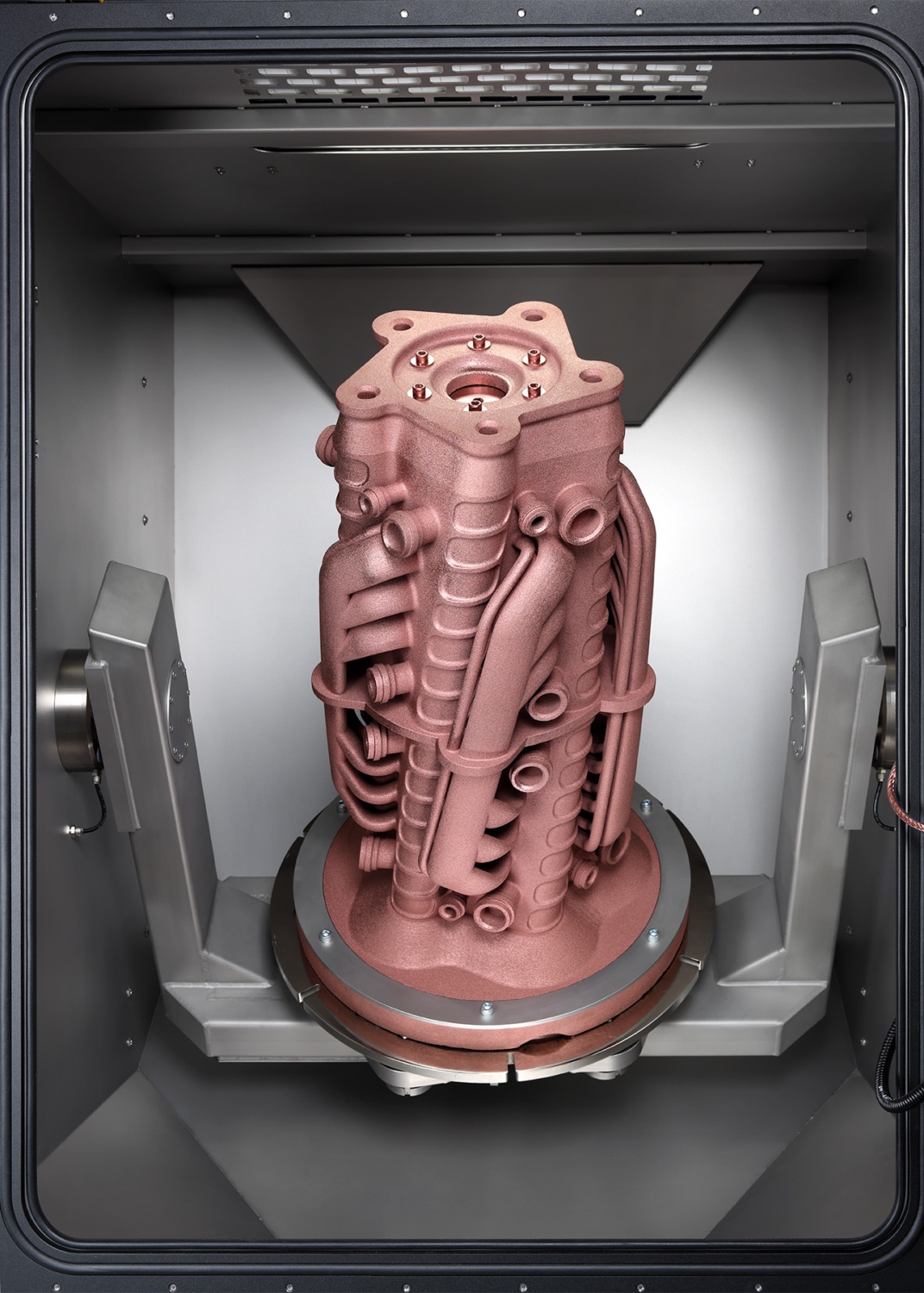 By making the post-processing machine most well-suited for metal rocket and airplane parts, Solukon is putting itself in a favorable position to capture the metal AM post-processing market in general. Given the stakes related to that, it's not unreasonable to expect that Solukon — or whichever company becomes the leader in the field — could gain increasing control over AM circular economies over the next decade. Visitors at the RAPID + TCT conference in Detroit (May 17-19) can see the Launcher system at the Solukon booth (#2137). Images courtesy of Solukon. The post Rocket 3D Printing Startup Launcher Acquires Solukon System for Post-Processing appeared first on 3DPrint.com | The Voice of 3D Printing / Additive Manufacturing. |
| 7 3D Printing Projects Funded by ASTM to Drive AM Standards Posted: 05 Apr 2022 06:00 AM PDT Last year, ASTM International completed two project calls, the Request for Ideas (RFI) and the Call for Projects (CFP), marking solid investments in the organization’s fourth year of funded 3D printing research projects. Now, ASTM, which works to improve consumer confidence, public health and safety, and quality of life through standards integration, has announced its latest funded Research to Standards (R2S) projects. These seven new AM projects support the organization’s Additive Manufacturing Center of Excellence (AM CoE) in its ongoing work to speed up industrial adoption of AM and advance standardization of the technology. The AM CoE partnership between ASTM International and organizations from academia, industry, and government began in 2018. Its work obviously dovetails with that of ASTM, in that it leads R&D efforts in order to set up standards across every part of the AM workflow, from materials and machines to data registration and more. Over 90 project ideas were submitted by ASTM International members in response to this year’s RFI, and many were submitted by non-AM CoE partners for the CFP as well. Members of the executive subcommittee within ASTM's F42 additive manufacturing technologies committee reviewed and ultimately approved the final projects for funding.
Three ideas were chosen in response to the RFI, and the first is by Auburn University, which will set up a standardized practice, focused on characteristic defects in AM processes, for measuring the density of 3D printed parts. The UK’s Manufacturing Technology Centre (MTC) will work on developing measurement and classification methods for assessing the cleanliness of powder. Also, together with AON3D and the National Research Council of Canada (NRC), Wichita State University's National Institute for Aviation Research (NIAR) will create a testing method for interlayer shear properties in parts 3D printed with extrusion-based technology.  Using a metal 3D printer inside the NIAR Additive Manufacturing Lab in 2017. (Image: Wichita State University) Four CFP projects were chosen to receive support, with the first submitted by the Colorado School of Mines. For this project, researchers will collect data in order to support the creation of a standard process to measure what’s described in an ASTM press release as “the load-bearing cross sectional area for mechanical testing of coupons with as-built AM surfaces.” Another approved project is by the Fraunhofer Institute for Laser Technology (ILT), which will set up a guideline to continue print jobs after interruptions of the build. In addition to its RFI project, the NRC also had a project approved for the CFP. The council will generate data regarding how moisture affects the additive manufacturing process and printed part properties, in order to create a procedure for evaluating critical moisture levels. Finally, the University of Alabama at Birmingham will develop a testing method that can measure tensile properties of filaments that are used in material extrusion-based AM processes. ASTM’s AM CoE works to speed up the development and adoption of innovative technologies like additive manufacturing by setting up training and certification programs and supporting standardization efforts, as well as offering business strategy, market intelligence, and advisory services thanks to the recent acquisition of Wohlers Associates. Each of the chosen RFI and CFP projects will address at least one, and sometimes more than one, of the standardization gaps named in the Additive Manufacturing Standardization Collaborative (AMSC) roadmap that America Makes and ANSI published together. The post 7 3D Printing Projects Funded by ASTM to Drive AM Standards appeared first on 3DPrint.com | The Voice of 3D Printing / Additive Manufacturing. |
| EWI to Install Calibur3 Electron Beam Metal 3D Printing Technology Posted: 05 Apr 2022 05:30 AM PDT Engineering service provider EWI––formerly the Edison Welding Institute––has agreed to purchase a Calibur3 system from UK-based electron beam (eBeam) 3D printer manufacturer Wayland Additive and use it to identify new opportunities in metal additive manufacturing (AM) applications. In addition, by signing a memorandum of understanding (MOU), the duo will collaborate to extend the production capabilities of eBeam metal AM once the Calibur3 system is installed at EWI's Buffalo Manufacturing Works research facility in New York. 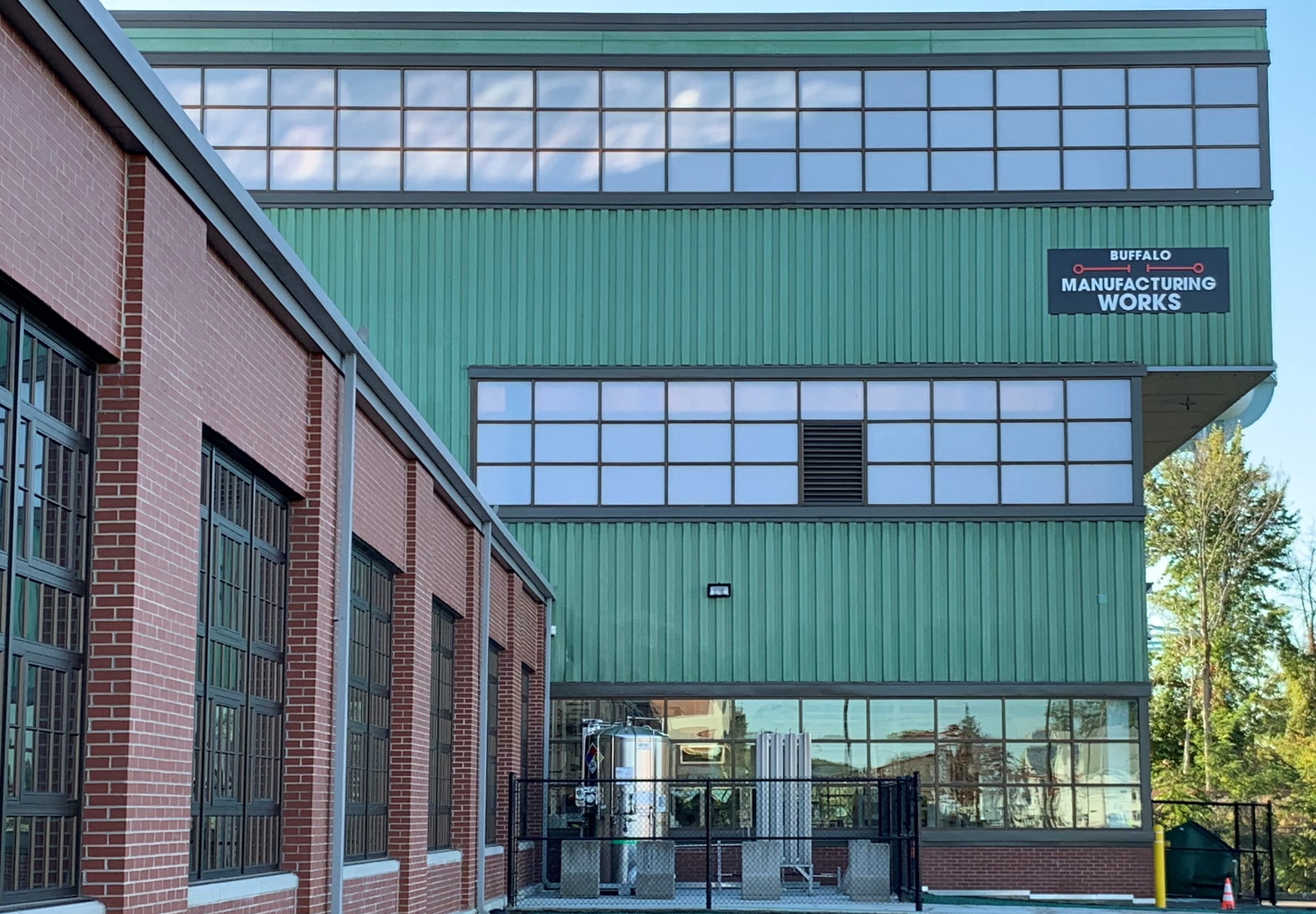 Buffalo Manufacturing Works building. Image courtesy of EWI. Buffalo Manufacturing Works building. Image courtesy of EWI.The EWI research team already has an in-depth understanding of metal AM processes, and this joint effort will help deepen their work. A pioneering engineering and manufacturing technology organization, EWI works with all seven AM processes under one roof to support manufacturers through all stages of the AM process. For example, EWI previously engaged in a highly publicized partnership with Phillips Service Industries' subsidiary Sciaky to produce prototype parts for high-tech manufacturers using Sciaky's electron beam 3D printing technology. More recently, EWI decided to add SPEE3D's cold spray-based supersonic 3D printers to its soon-to-launch Cold Spray Research Center. This time around, EWI and Wayland will work together to identify and fulfill collaborative commercial and government projects based on the strengths of both organizations. They will also partner to advance the state-of-the-art of eBeam powder bed fusion (PBF) technology. 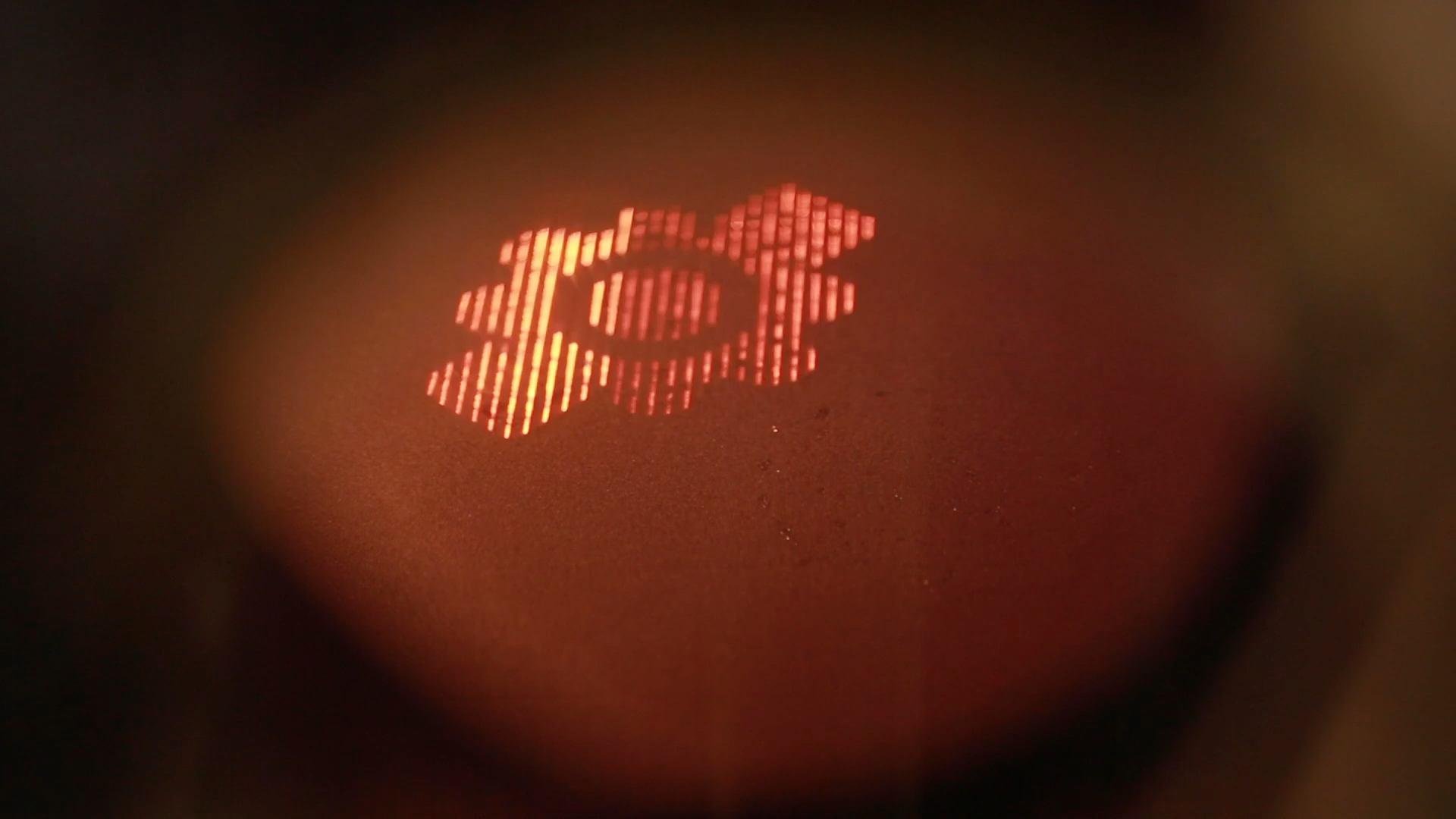 Inside the Calibur3 during printing. Image courtesy of Wayland Additive. Inside the Calibur3 during printing. Image courtesy of Wayland Additive.Wayland's technology was identified as part of EWI's Additive Manufacturing Consortium (AMC) project, which was created to research emerging technologies to accelerate and advance the manufacturing readiness of metal AM. Established in 2010, the consortium currently has more than 50 members worldwide from various industries, including aerospace and heavy equipment manufacturers, powder, equipment, and technical service providers; R&D organizations; government agencies; and academic institutions. All 50 members hope to impact the AM landscape through organized and focused activities positively and by addressing the technical challenges that have stalled the advancement of AM processes such as PBF and directed energy deposition (DED) using lasers, arc, and electron beams. Expanding the use of eBeam 3D printingAs the newest addition to the Buffalo Manufacturing Works, Calibur3's ability to print without solidifying the entire powder cake will provide users with the potential to produce features that were formerly not suited for eBeam PBF, claims EWI's Director of AM Programs, Mark Barfoot. Launched in January 2021, the Calibur3 is Wayland's first production NeuBeam 3D printing system. Created from the ground up by a team of in-house physicists, NeuBeam metal AM is an electron beam PBF process that can actually neutralize the charge accumulation you normally see with electron beam melting (EBM), which enables more flexibility than laser PBF while overcoming the stability issues of traditional eBeam PBF. The creators used physics principles learned in the semiconductor sector to develop this unique method, which, as Wayland states, can overcome "the inherent instabilities of traditional eBeam processes," along with the typical internal residual stresses that occur with PBF technologies. According to Wayland CEO Will Richardson, Calibur3 opens up many new opportunities for production applications of eBeam metal AM because of the unique capabilities of the NeuBeam process.
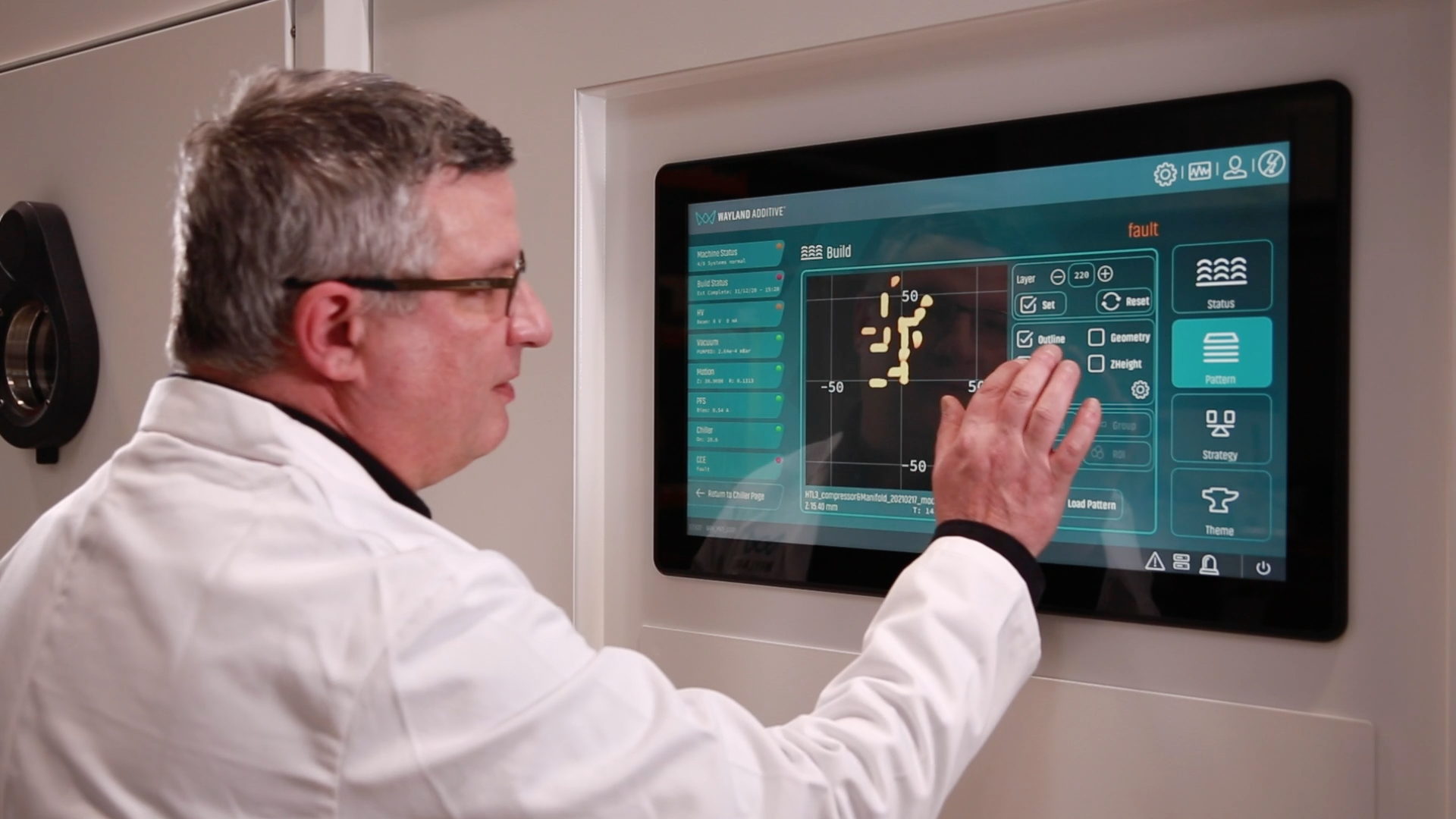 Programming the Calibur3. Image courtesy of Wayland Additive. Programming the Calibur3. Image courtesy of Wayland Additive.In fact, Senior Technology Leader of AM at EWI, Ron Aman, said the organization's customers are already very interested in leveraging the capabilities of Calibur3 for their applications. Adding this unique capability to EWI's suite of metal AM processes could not only expand the uses for the technology but also support Wayland along the way with other process and material developments. Similarly, Wayland's Business Development Director Peter Hansford explained that the company is witnessing real-world applications for Calibur3, which is proving to be valuable in the industrial world, and says he "can't wait to see how Calibur3 opens up more new applications in the hands of this very capable team." The startup has grown since selling its first Calibur3 to Canadian firm Exergy Solutions and since it began distributing its flagship product to Japan, Taiwan, and South Korea. Today, thanks to this new MoU with EWI, the duo will solidify their joint collaboration and expand its application spectrum to deliver real engineering solutions to even more clients, helping consolidate the adoption of AM across new industries. The post EWI to Install Calibur3 Electron Beam Metal 3D Printing Technology appeared first on 3DPrint.com | The Voice of 3D Printing / Additive Manufacturing. |
| Markforged Makes First Acquisition With Teton Simulation Posted: 05 Apr 2022 05:00 AM PDT As one of the leading 3D printing companies in the world, Markforged (NYSE: MKFG) has created an integrated metal and carbon fiber additive manufacturing (AM) platform called the Digital Forge, and one of the key components of that is software. Markforged already boasts its patented Eiger slicer and 3D print preparation tool. Yet, hoping to expand its software offering, the Massachusetts-based business has now acquired Teton Simulation, whose trademarked SmartSlice technology automates validation and optimizes part performance for AM applications. Although the exact price and terms of this deal have not yet been disclosed, we do know that Markforged will integrate Teton's technology with its 3D printing software solution Eiger, as a subscription add-on that will offer all manufacturing customers––including small- and medium-sized businesses––a streamlined workflow spanning part design, testing, optimization, validation and printing at the point of need, all on a single, cloud-based platform. First and foremost, it will enable manufacturers to validate advanced composite parts for their most demanding production applications. Since coming out of stealth mode at the SolidWorks World trade show almost a decade ago, Markforged has been on a strong growth trajectory, attracting advisors, investors, and talent. Driven primarily by organic growth, in July 2021, the firm made its debut on the New York Stock Exchange after a merger deal with blank-check company one. Fast forward to today, and Markforged has raised a total of $346.8 million in funding over seven rounds and boasts backers like Microsoft, Porsche, and Siemens to fuel its 3D printing growth. With an equity valuation of roughly $2 billion, Markforged recently announced better-than-expected full-year 2021 earnings and anticipated revenue growth of 30% for 2022. Building up its portfolio to scale distributed global production, Markforged's latest move seems to complement its plans and is in line with a wave of 3D printing mergers and acquisitions that grew strong in 2021. Optimizing the software suiteThis new and first acquisition will enhance Markforged's lead in distributed manufacturing by extending its end-to-end platform with fast, automated validation of the most demanding end-use parts and applications. Furthermore, the company claims that the deal adds strategic functionality to the Digital Forge to give Markforged's thousands of users confidence that printed parts will perform as intended, enabling them to replace even more end-use metal parts with validated Continuous Fiber Reinforcement (CFR). Markforged President and CEO Shai Terem said that the acquisition advances Markforged's industry leadership in using software to increase process automation and offers customers an easy way to validate their parts on the same platform they use to print them, the Eiger software suite.
This addition to Markforged's software offerings is expected to help customers take the guesswork out of configuring slicing parameters for end-use requirements, knowing they can estimate part performance without the wasteful and slow physical testing process. Moreover, Teton Simulation's Chief Technology Officer (CTO) Brady Adams said the integration and fit of the cloud-native simulation software into Markforged's Digital Forge platform would provide the perfect home to develop the next level of additive manufacturing solutions.
Launched in 2016, Teton Simulation is an expert software technology startup that enables rapid validation and optimization of 3D print parameters. Overall, it ensures that performance and manufacturing requirements are realized. Headquartered in Wyoming, the company developed its proprietary SmartSlice technology, which embeds into existing slicer programs. Aiming to replace the standard print-break-repeat prototyping cycle to speed development and reduce the time and cost of production, Teton has teamed up in the past with 3D printing firms, like BCN3D and Cura, to provide users access to the powerful SmartSlice system. The win-win deal benefits Markforged software performance while allowing Teton's software offering to reach a broader customer base than ever before. As soon as the agreement is finalized, Teton's team will join Markforged's software organization to help the Digital Forge solve even more industrial manufacturing challenges. The post Markforged Makes First Acquisition With Teton Simulation appeared first on 3DPrint.com | The Voice of 3D Printing / Additive Manufacturing. |
| 3D Printing Industry Worth $10.6B, Says Annual SmarTech Analysis Data Posted: 05 Apr 2022 05:00 AM PDT As AMUG 2022 kicks off, SmarTech Analysis has published its annual data for the 2021 3D printing industry. Including all hardware, materials, software and 3D printing services, the market grew by 18 percent from the previous year. This brings total revenue for 2021 to an estimated $10.6 billion. Broken down by broad market segments: metal additive manufacturing (AM) grew 16 percent to $3.9 billion, polymers grew 13 percent to $5.8 billion, and software grew significantly, accounting for $900 million in revenues in 2021. The full dataset is available through SmarTech's data services program, either as a one-time purchase or via subscription plan. The report includes full numbers for 2021, which indicated strong single-digit growth year over year, as well as continued sequential growth from Q3 to Q4 2021.  Among the sectors to experience strong growth in 2021 was dental 3D printing. For instance, Desktop Health received FDA 510(k) clearance of Flexcera Base, a proprietary resin for use in 3D fabrication of high-quality dental prosthetics. (Photo: Business Wire)
SmarTech suggested that one of the major drivers for growth was standardization of AM at the industrial level. This included dozens of standards development projects, such as crucial standards publications like the ASTM International F3529 standard for material extrusion. The market analysis firm highlighted other trends for the year, such as updates to metal powder bed fusion. Advances to this technology, many announced at Formnext and to hit the market in 2022, will "reenergize the competitive landscape." SmarTech also pointed two specific end user markets as indicating important developments: dental and consumer goods. AM's most mature market segment, the dental industry was significantly impacted negatively during the height of the pandemic. Yet, SmarTech notes that, during 2021, key players within this sector experienced "outstanding growth." We also saw numerous projects throughout the year dedicated to metal and polymer 3D printing for sporting goods, cycling, appliances, and electronics. This, the market research firm suggests, will result in compounded growth for AM overall for the year to come. 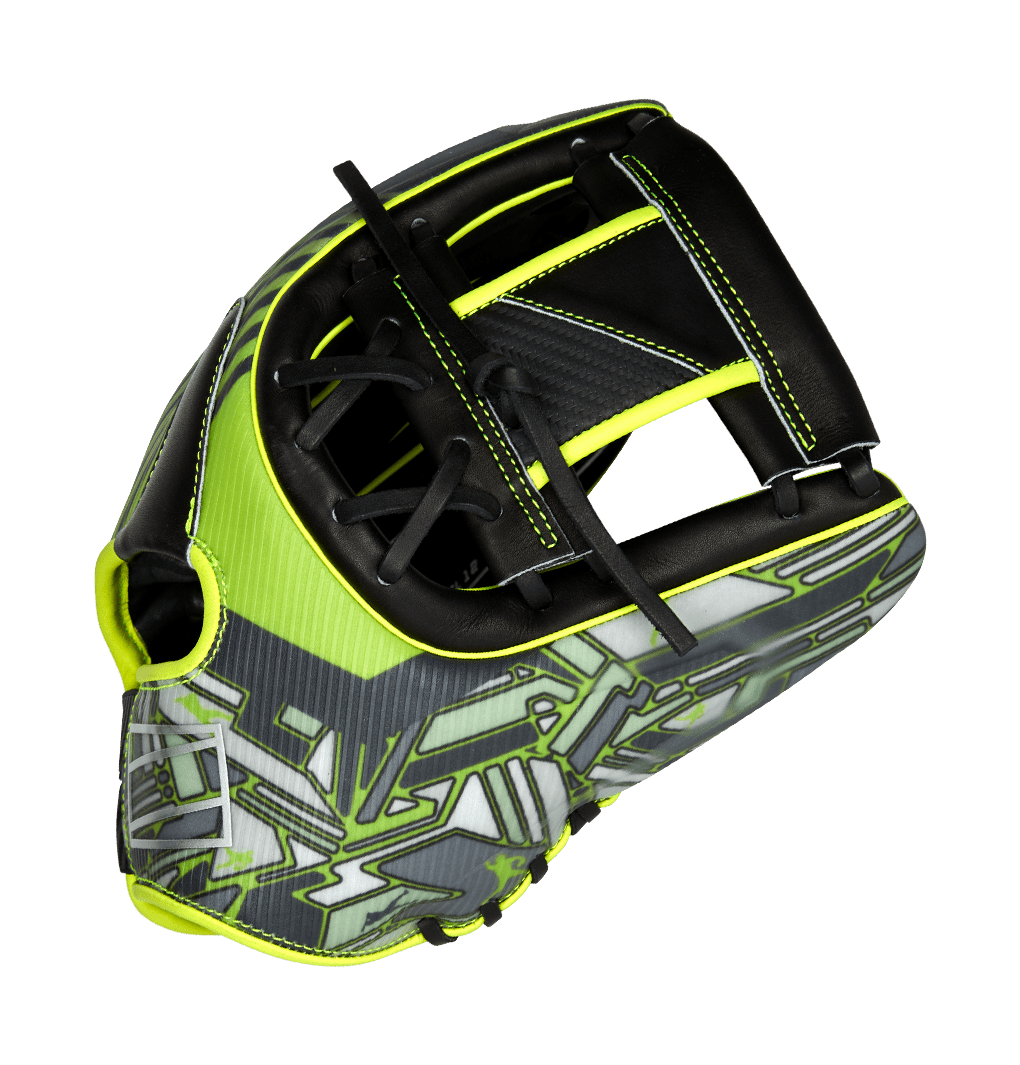 Consumer goods also saw greater use of 3D printing in 2021, as evidenced by a partnership between sporting goods manufacturer Rawlings with Carbon and Fast Radius. Image courtesy of Carbon. SmarTech's "Core Metals" and "Core Polymers" market data feature four years of historical quarterly data, as well as 10-year forward forecasts. They are available in quarterly reports as one-time purchases or subscriptions. They are customizable as needed and available at the SmarTech website here. The post 3D Printing Industry Worth $10.6B, Says Annual SmarTech Analysis Data appeared first on 3DPrint.com | The Voice of 3D Printing / Additive Manufacturing. |
| You are subscribed to email updates from 3DPrint.com | The Voice of 3D Printing / Additive Manufacturing. To stop receiving these emails, you may unsubscribe now. | Email delivery powered by Google |
| Google, 1600 Amphitheatre Parkway, Mountain View, CA 94043, United States | |
